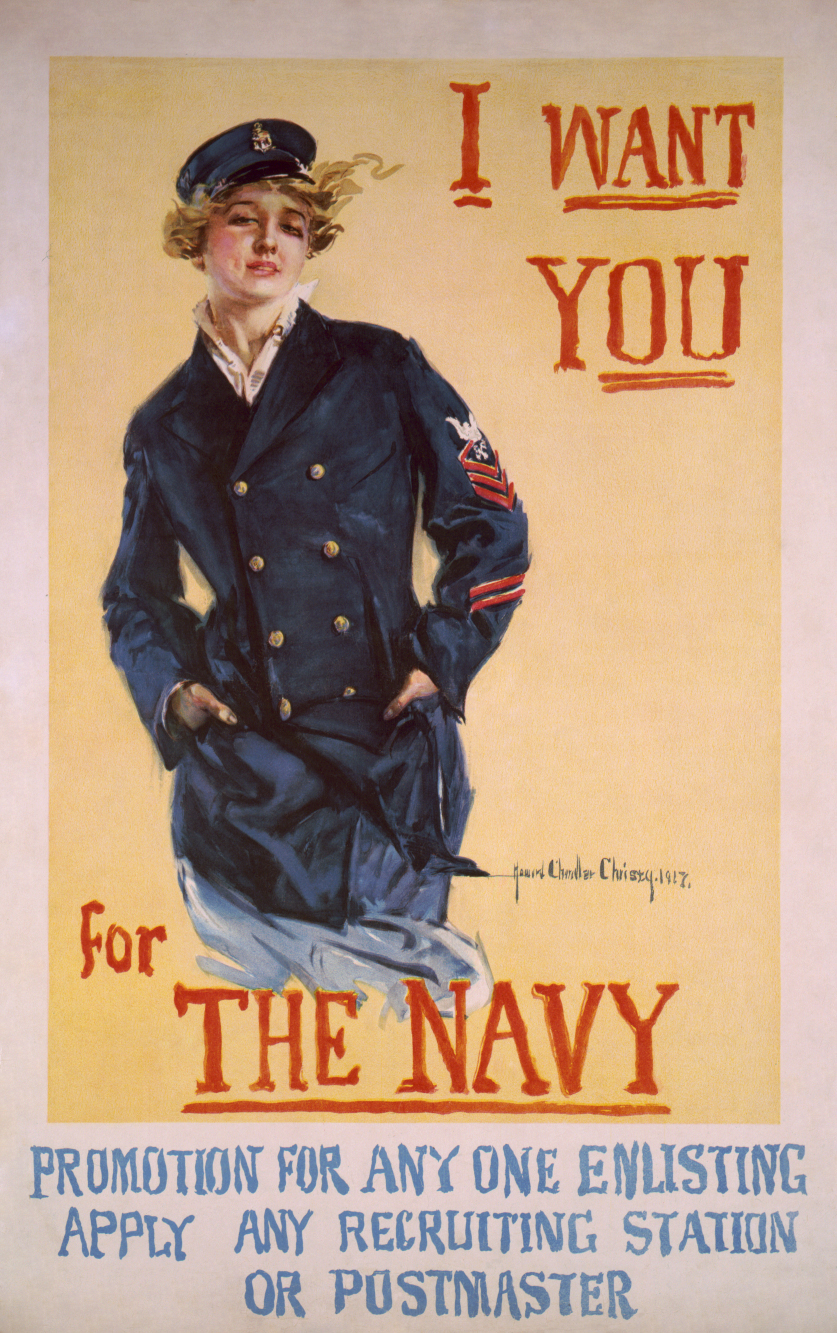Yeomen (F)
Enlarge text Shrink textYeoman (F) was an enlisted rate for women in the U.S. Naval Reserve during World War I. The first Yeoman (F) was Loretta Perfectus Walsh. At the time, the women were popularly referred to as "yeomanettes" or even "yeowomen", although the official designation was Yeoman (F). The U.S. Naval Reserve Act of 1916 permitted the enlistment of qualified "persons" for service; Secretary of the Navy Josephus Daniels asked, "Is there any law that says a Yeoman must be a man?" and was told there was not. He began enlisting females as Yeoman (F), and in less than a month the Navy officially swore in the first female sailor in U.S. history. Typically, female Yeoman reservists performed clerical duties such as typing, stenography, bookkeeping, accounting, inventory control, and telephone operation. A few became radio operators, electricians, draftsmen, pharmacists, photographers, telegraphers, fingerprint experts, chemists, torpedo assemblers and camouflage designers. Female Yeomen did not attend boot camp. A large number were stationed in Washington, D.C., while others served in naval stations, hospitals, shipyards and munitions factories around the country. Many recruiting stations employed the women who volunteered there as very effective recruiters, and as many as forty women served in England, France, Puerto Rico, the Virgin Islands, the Canal Zone, Guam, and the Territory of Hawaii. Without new technologies, the Navy would never have had enough jobs to employ 11,274 female Yeomen. Also, having women in uniform was a positive image for the Navy to project. As well as their many military duties, the women were taught to march and drill at public rallies, recruiting campaigns, war bond drives, and troop send-offs.
Read more on Wikipedia >
 Topic
Topic






